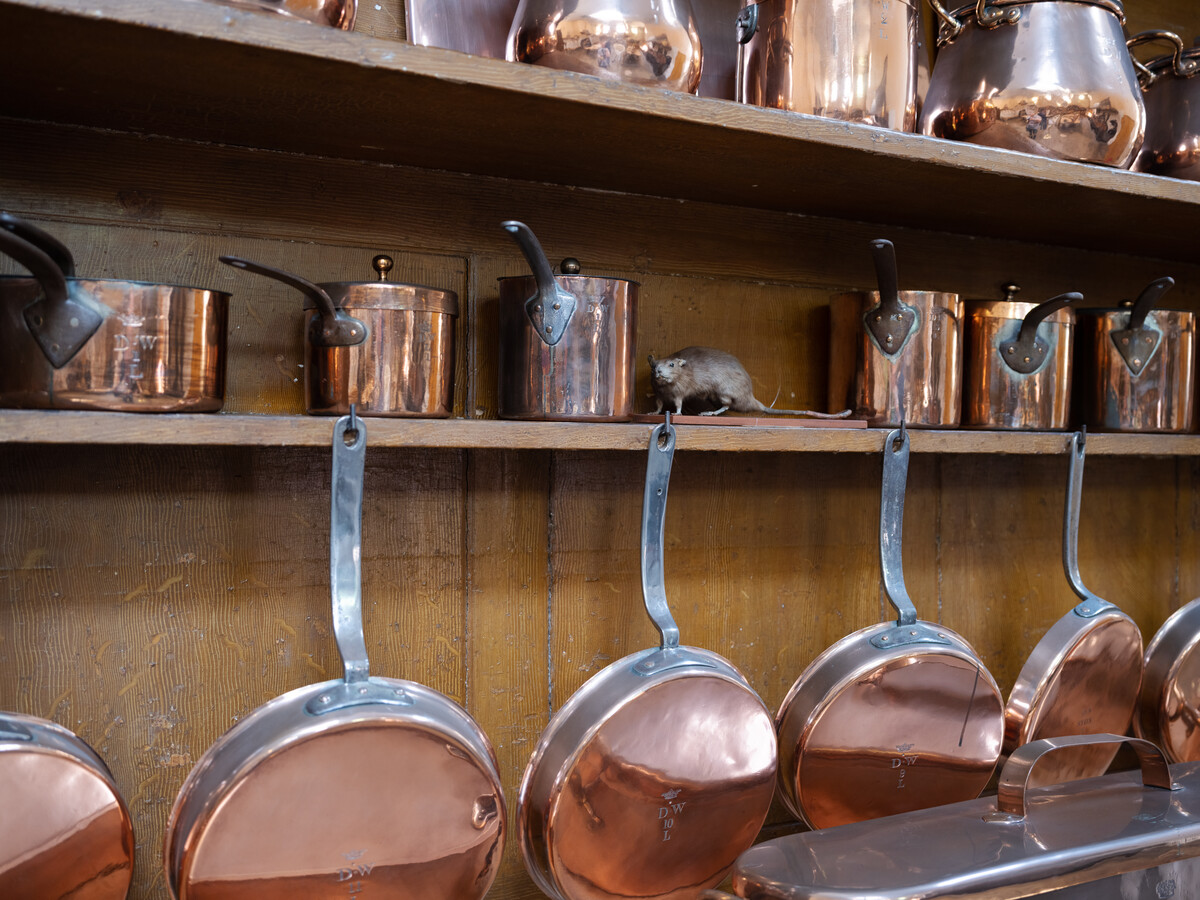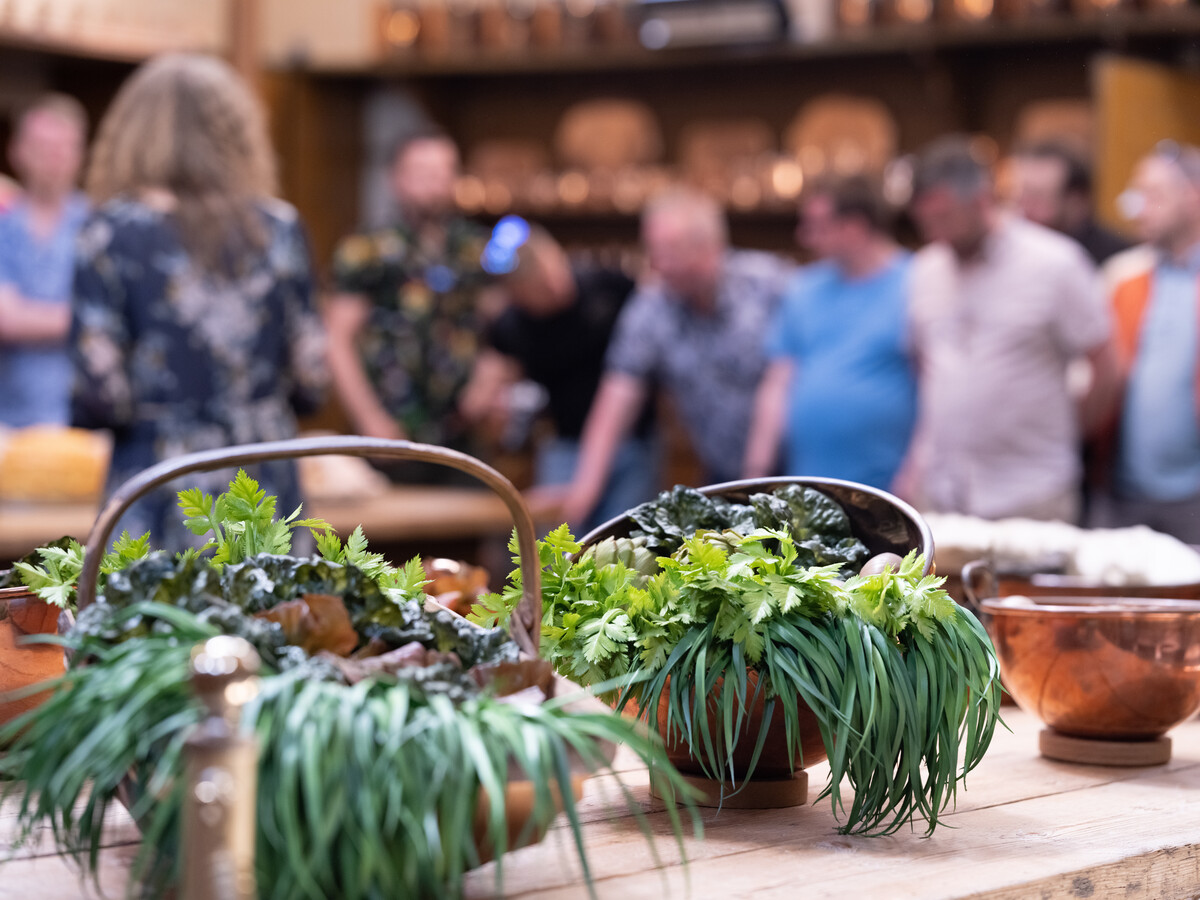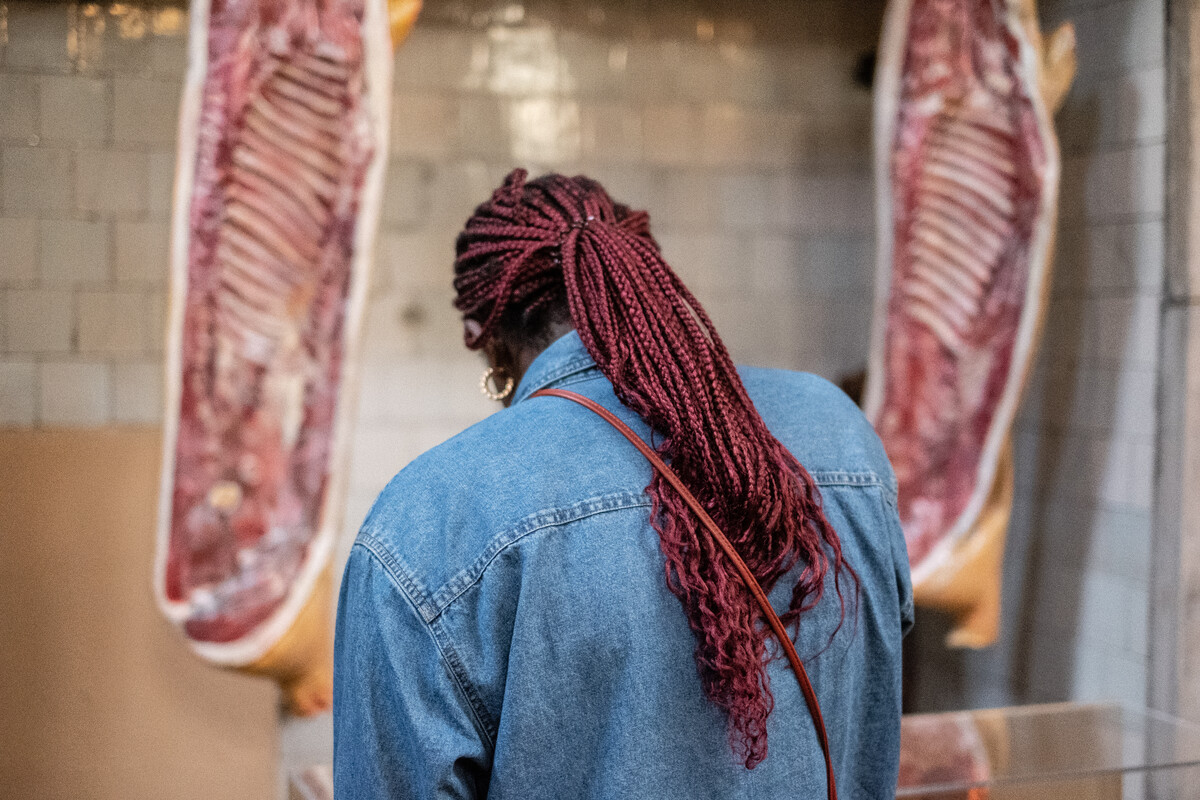
Great Kitchen

With its modern technology and unusual decorative touches, the ‘King’s Kitchen’ broke new ground in England. It matched the highest French standards of food service and preparation.
The Great Kitchen was one of the first rooms to be completed during John Nash’s transformation of the Royal Pavilion. George loved food and fine dining, and this is reflected in the space allocated to the new kitchen and ancillary rooms. The kitchen is close to the main state rooms – staff could pass through the adjoining Table Deckers room straight ito the Banqueting Room. And unlike most service rooms, it included some decorative features – cast iron columns topped with painted copper palm leaves form part of the structure. Also known as the King’s Kitchen, George took pride in showing his visitors around.

Embracing new technology
Despite the artistic flourishes, this was one of the most technologically advanced kitchens of its day. It was spacious, light and well-ventilated, with water pumped from a nearby well. An open fire with a huge smoke jack enabled five spit-roast meats to be cooked at the same time. There was also a stewing stove and an innovative central steam table, making it easier to keep food warm. This was essential given that up to 70 separate dishes might be prepared for a banquet for the King.
The wooden shelves and dressers to store kitchen equipment and utensils were made by a local carpenter. Today, they display a collection of gleaming copper pots and pans from the Duke of Wellington’s London home.
French inspiration
Although some original equipment was removed after the Pavilion was no longer used as a royal residence, the Great Kitchen retains the appearance and spirit of the Regency period. It was designed to match the standards set in France, where food preparation and service had reached new levels of sophistication. In 1816, George employed the renowned French chef Carême to cook for him at his homes in London and Brighton. Famed for his patisserie and elaborate desserts, Carême stayed for just a year. But it was perhaps thanks to his influence that five pastry and confectionary rooms were created among the Royal Pavilion’s original ancillary kitchens.
